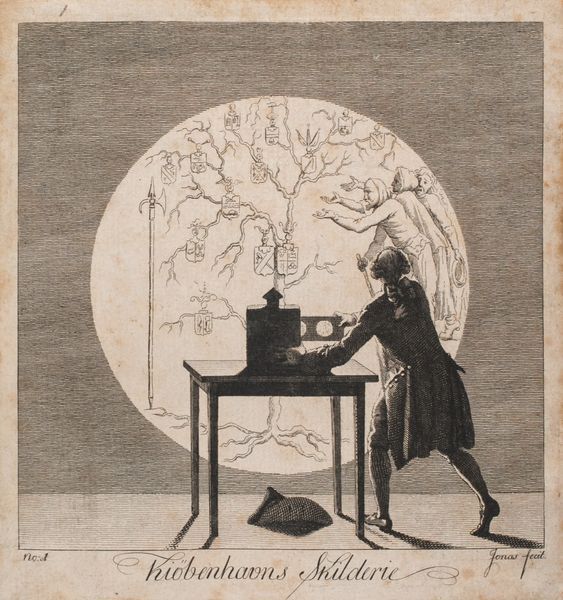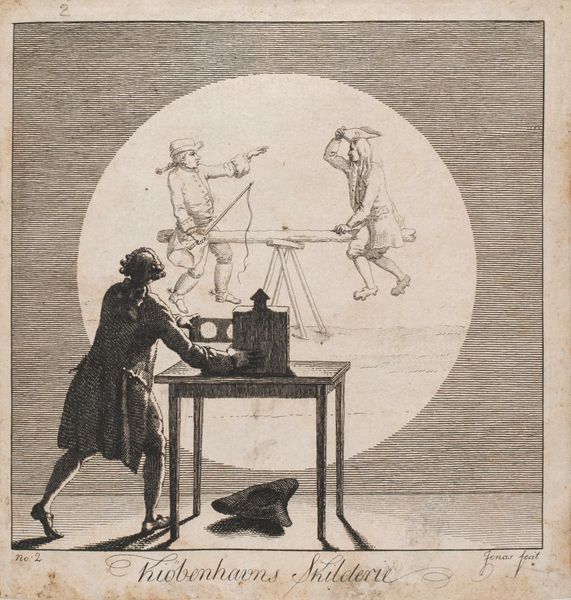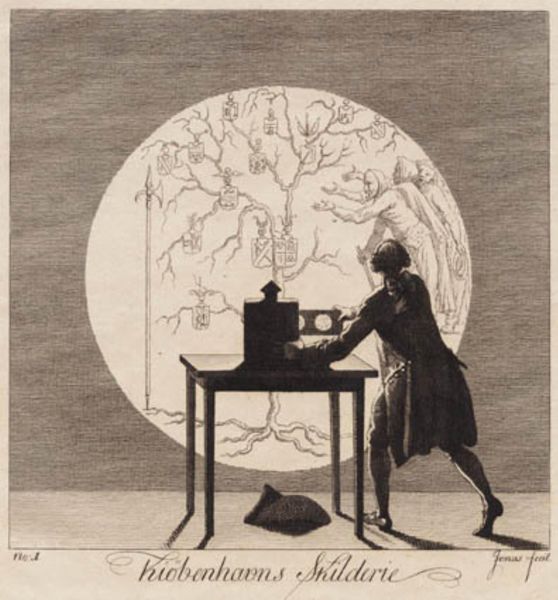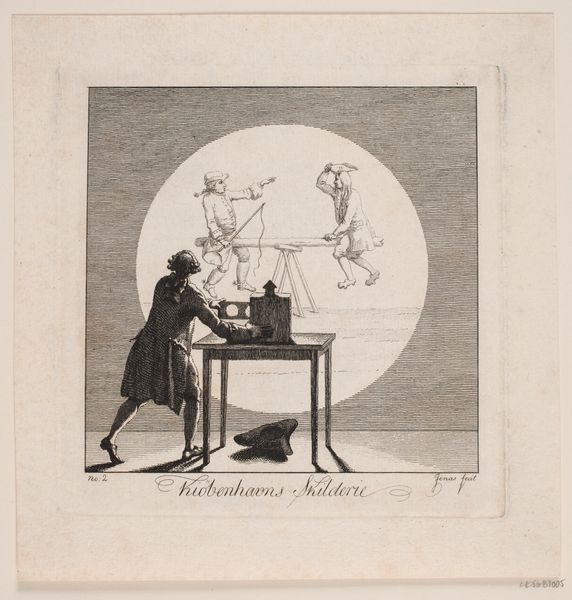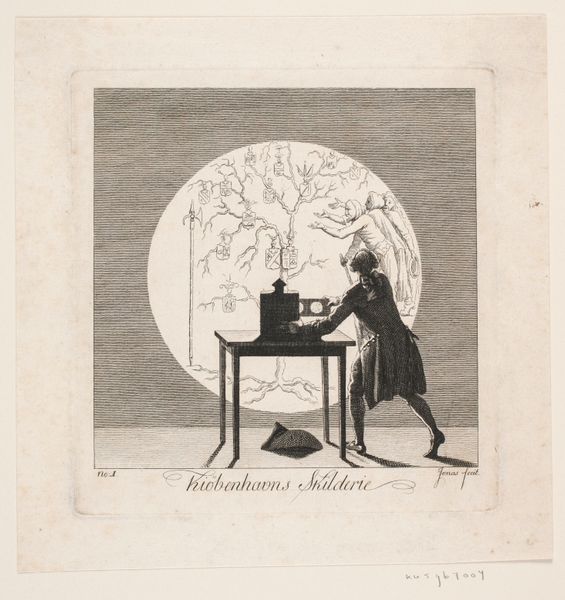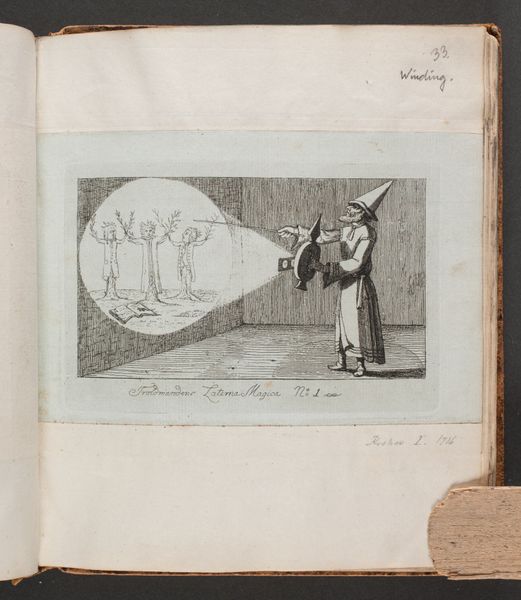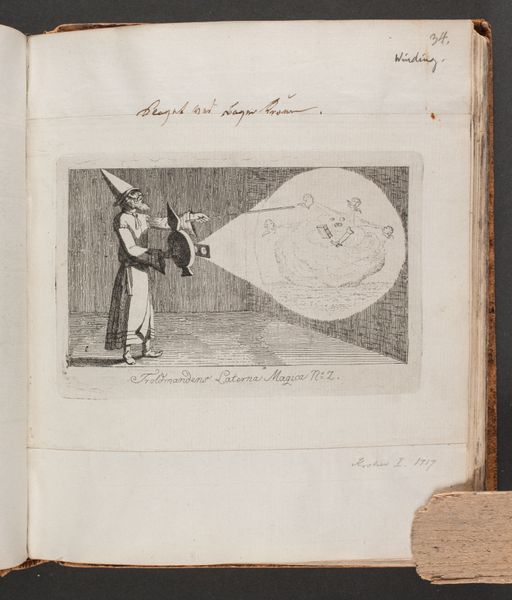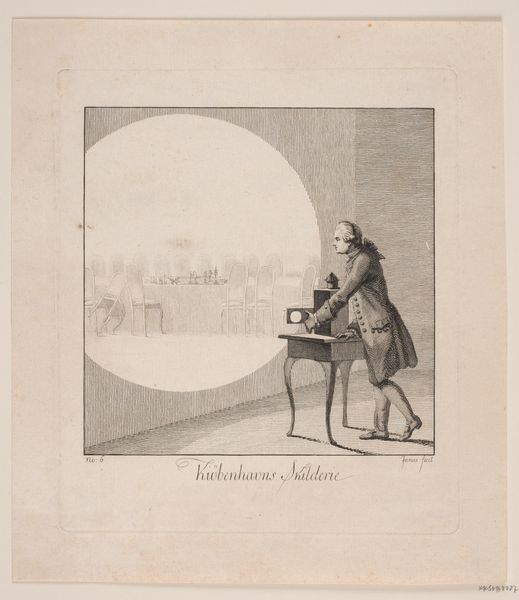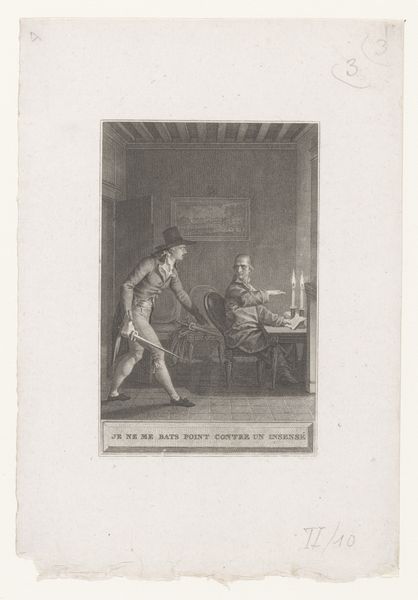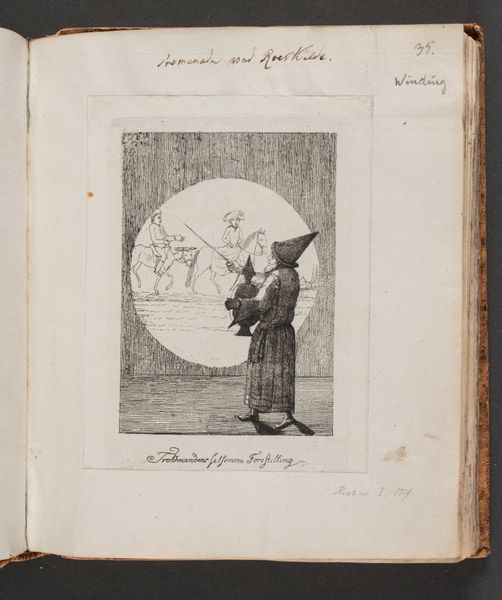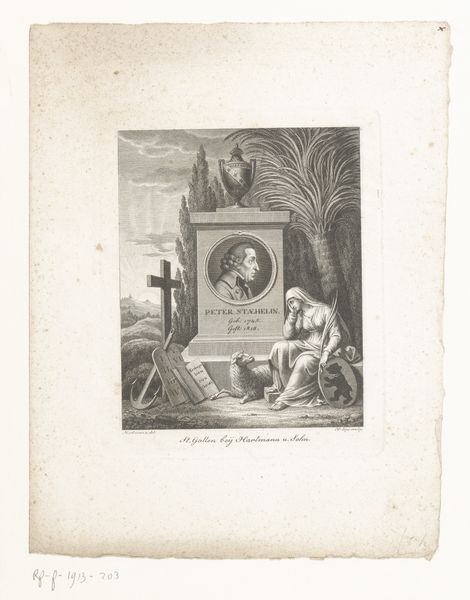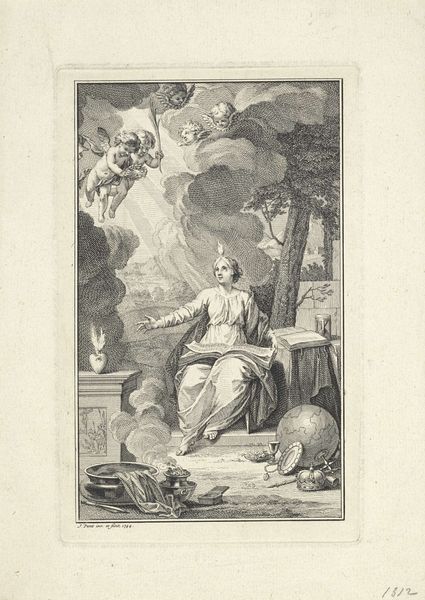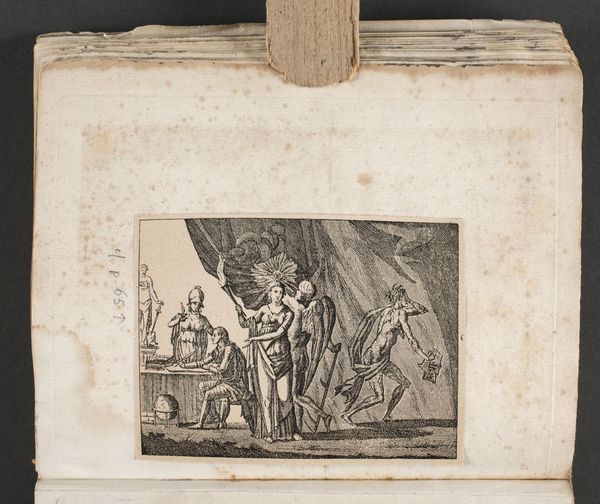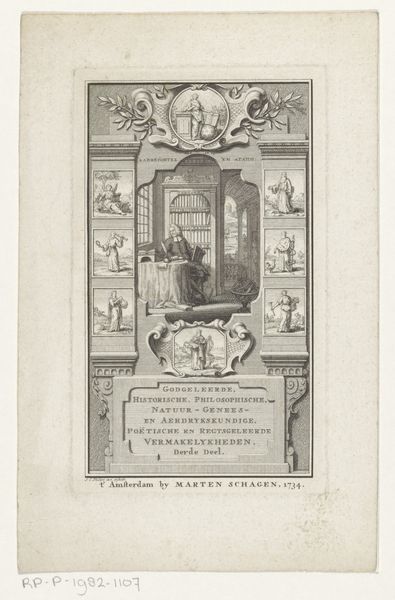
drawing, print, etching, paper
#
portrait
#
drawing
#
neoclacissism
# print
#
etching
#
paper
#
history-painting
Dimensions: 154 mm (height) x 145 mm (width) (bladmaal)
Editor: This etching from 1787 by J.F. Clemens, titled "\"Kiøbenhavns Skilderie\". Nr. 4," presents an intriguing scene. There's a figure working at a desk, but then this very dream-like circle behind him… I'm immediately drawn to the imagery within that circle. How do you interpret this work and the symbols it seems to be playing with? Curator: Indeed. That striking juxtaposition is key. Look at how the figure is positioned—seemingly grounded in reality at his desk. And yet, this "Skilderie," or painting, behind him reveals another layer of consciousness. The image within the circle pulls heavily on mythological symbols: the fallen angel perhaps referencing Icarus and a hubristic downfall, another Classical figure lies asleep beside the first, an acceptance of failure. Doesn’t this layering of imagery within the piece suggest a kind of dialogue between ambition and its potential consequences? Editor: That’s a fascinating interpretation! The contrast you pointed out between the active artist and these symbolic representations of failure really adds a lot. Is that artist figure creating the picture we're seeing, then? Curator: Perhaps. Or perhaps he is responding to it? Think about how the artistic process often grapples with the weight of history, morality, or even human potential. The hat casually discarded nearby also carries some weight, especially at the close of the 18th Century; it hints at revolutionary aspirations. Clemens is using imagery here to express the intellectual spirit of the period. Does this shed a different light on its historical context for you? Editor: Absolutely. The revolutionary hat… I hadn’t connected that! Now, the whole piece speaks much more directly to the complex ideological currents of the late 1700s. The struggle, both creative and intellectual, is clear. Curator: Exactly! Visual symbols often have such lasting resonance. By looking closely at Clemens' symbols we've accessed cultural memory that transforms this from just a picture to an artwork that still has power and relevance today.
Comments
No comments
Be the first to comment and join the conversation on the ultimate creative platform.
